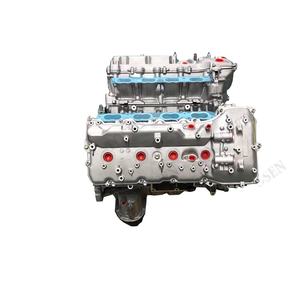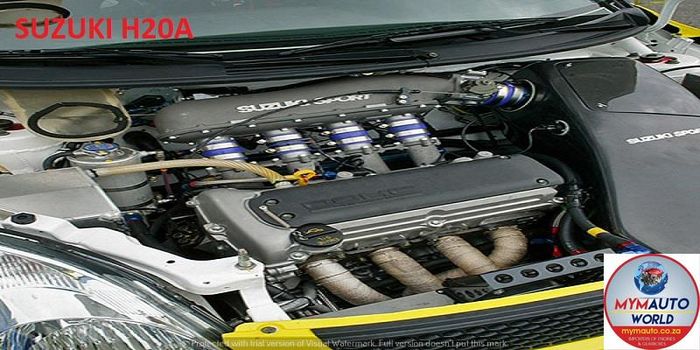Opel Corsa Engine: Whatever You Need to Know Before Acquiring
Opel Corsa Engine: Whatever You Need to Know Before Acquiring
Blog Article
Discovering the Inner Workings of a Compact Lorry's Engine System
As chauffeurs, we frequently consider provided the elaborate procedures that happen within the confines of our automobile's engine system. The portable yet intricate equipment that pushes us onward is a wonder of engineering accuracy and coordination. From the regulated surges in the burning chamber to the careful timing of fuel injection, every part plays an essential duty in the smooth operation of the engine. In this expedition of a small lorry's engine system, we will untangle the inner operations of this mechanical symphony, dropping light on the mysteries that drive us ahead on our day-to-day journeys.
Combustion Process Review
The burning procedure in a small lorry's engine system is a crucial device that successfully converts fuel into energy to power the lorry. This process occurs within the combustion chamber of the engine, where fuel and air mix, ignite, and produce controlled explosions. The combustion process includes four major phases: intake, power, exhaust, and compression.
Throughout the consumption stage, the piston relocates downward, pulling in a mixture of air and fuel right into the burning chamber. The next stage, compression, includes the piston moving up, pressing the air-fuel mix to enhance its strength. Ultimately, in the power stage, the trigger plug stirs up the compressed mix, causing a quick growth of gases that forces the piston pull back. This downward motion creates the power needed to drive the car. In the exhaust phase, the burnt gases are expelled from the burning chamber via the exhaust shutoff, preparing the chamber for the next cycle. This cyclic burning procedure is basic to the procedure of a small automobile's engine system, guaranteeing effective power conversion for propulsion.
Piston and Cyndrical Tube Communication

The piston's exact fit within the cylinder is important for maintaining optimum compression and avoiding power loss during burning. Limited clearances in between the piston and cylinder wall surfaces make certain reliable securing, allowing the piston to relocate efficiently without allowing gases to leak past. Correct lubrication is also important to lower friction and put on between these elements, improving long life and performance.
In addition, the style and products made use of in producing the piston and cyndrical tube impact engine efficiency and sturdiness. Modern engines typically employ light-weight yet long lasting materials like light weight aluminum alloys for pistons and cyndrical tube linings to lower inertia and improve thermal efficiency. Overall, the unified interaction between the piston and cyndrical tube is fundamental to the engine's performance and total efficiency.
Gas Shot System Capability
Fuel injection systems in small car engines play a crucial role in precisely delivering fuel to the combustion chamber for reliable and regulated ignition. The gas injection system functions by injecting gas into the combustion chamber at the optimum moment throughout the engine's operation (opel corsa engine). This accurate timing makes sure that the gas blends equally with the air for proper burning, resulting in enhanced fuel effectiveness and lowered discharges
There are mainly 2 sorts of fuel injection systems utilized in portable lorry engines: port gas shot (PFI) and direct gas injection (DFI) PFI systems click here for more infuse gas right into the intake port before the consumption shutoff, while DFI systems infuse gas straight into the combustion chamber. Both systems have their advantages, with DFI using far better fuel atomization and PFI supplying a more cost-effective remedy.
Recognizing Engine Air Conditioning Mechanisms
Efficient procedure of a small vehicle's engine counts greatly on the efficiency of its cooling mechanisms. Engine air conditioning is necessary to protect against getting too hot, which can result in significant damage and reduced efficiency. The cooling system in a compact vehicle usually contains numerous elements interacting to regulate the engine temperature. One essential part is the radiator, which utilizes coolant to take in heat from the engine. As the hot coolant moves through the radiator, it launches heat right into the air, cooling down prior to going back to the engine. The water pump flows the coolant via the engine and radiator, making sure a constant circulation to manage temperature level. Additionally, the thermostat helps manage the coolant flow to maintain optimum engine temperature level. Some vehicles additionally have cooling followers that activate when added cooling is needed, such as during hefty website traffic or warm climate. Understanding these engine cooling devices is vital for preserving the efficiency and longevity of a portable automobile's engine system.

Exhaust System Elements Explained
The optimal functioning of a small car's engine air conditioning systems depends on a complementary system understood as the exhaust system, which consists of numerous important elements for making certain reliable emissions and engine efficiency. The exhaust manifold gathers exhaust gases from the engine's paths and cylinders them to the catalytic converter.
One vital visit the website component of the exhaust system is the oxygen sensor, which monitors the oxygen levels in the exhaust gases to assist manage gas intake and ensure ideal engine efficiency. opel corsa engine. Furthermore, the resonator might exist in some exhaust systems to lower noise levels. Overall, the exhaust system plays a vital role in maintaining engine effectiveness, reducing harmful exhausts, and ensuring a quieter driving experience for compact car proprietors

Verdict
Finally, the small vehicle's engine system is an intricate combination of elements that interact to help with the combustion procedure, convert gas into power, and expel waste gases. Comprehending the inner operations of the engine system, check these guys out including the piston and cylinder interaction, fuel injection system, engine air conditioning systems, and exhaust system components, is crucial for preserving ideal efficiency and performance of the automobile.
The burning process in a compact vehicle's engine system is a crucial system that efficiently converts gas right into power to power the automobile.Gas injection systems in portable car engines play a critical duty in precisely providing fuel to the combustion chamber for controlled and efficient ignition.There are mainly two kinds of gas shot systems utilized in portable vehicle engines: port gas injection (PFI) and straight gas injection (DFI) Recognizing these engine cooling mechanisms is crucial for preserving the efficiency and durability of a small automobile's engine system.
The optimum functioning of a compact lorry's engine cooling mechanisms depends on a complementary system understood as the exhaust system, which makes up different essential components for guaranteeing reliable discharges and engine efficiency.
Report this page